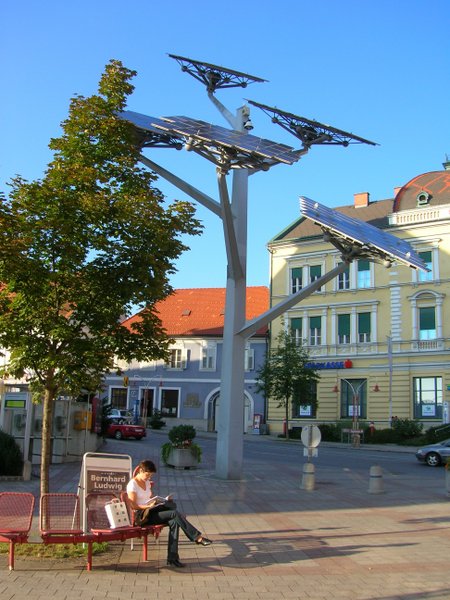 Photovoltaic solar panels are panels that produce electricity by converting solar energy (radiation). The solar radiation given off by the sun is collected by solar cells made of photovoltaic materials and is converted by semiconductors to form electricity.
Photovoltaic solar panels are panels that produce electricity by converting solar energy (radiation). The solar radiation given off by the sun is collected by solar cells made of photovoltaic materials and is converted by semiconductors to form electricity.
The way the electricity is formed is essentially by collisions between electrons and photons of light which in turn gives off energy in the form of direct current electricity.
The photovoltaic cells (often referred to as PV Solar Panels) are usually arranged in a grid or array and are connected together to harness more of the suns energy and in turn produce more electricity.
Some of the materials that make up PV solar panels include monocrystalline, amorphous and polycrystalline silicon as well as cadmium telluride.
It is imperative we move toward solar energy as it is an infinitely renewable energy that is clean, meaning it will never run out and will not damage the environment around us. By using solar energy we are not only lessening any further impact the consumption and production of electricity produces, but we are also allowing Mother Nature to take a breather and repair some of the damage already done.
As with all technologies, Photovoltaic solar panels are becoming smaller, more efficient and more affordable as time goes on, it is estimated that around 30% of the globes energy will be obtained from solar energy by as early as 2013.
Around one hundred countries across the globe employ solar energy as an alternative energy source. It is currently the fastest growing alternative energy technology, it’s also the most viable and effective. Unfortunately it still only accounts for a fraction of the world’s energy usage.
One of the reasons for this still relatively small uptake in this alternative energy source is cost. The cost of solar panels can run into the thousands of dollars.
You can however make your own Photovoltaic solar panels for a fraction of the price of a commercial Photovoltaic solar panel Read More…
Write your comments here!